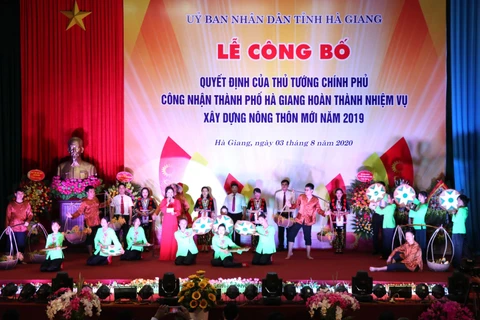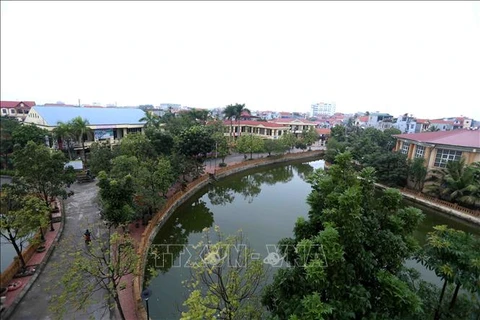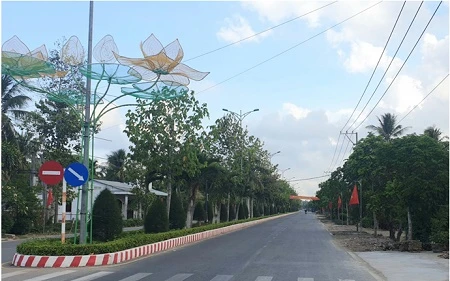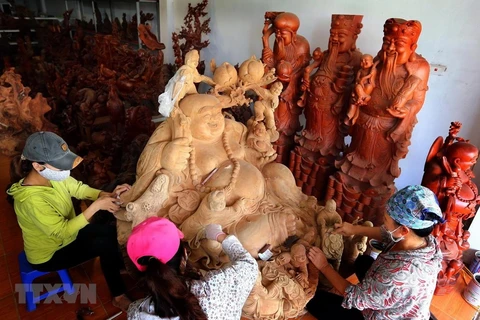Hanoi (VNA) – Hanoi now has 13 communes meeting advanced criteria for new-style rural areas, up two communes compared to the end of 2019, according to the city’s coordinating office for the new-style rural area programme.
Two more communes have also been recognized as new-style rural areas this year, bringing the total number of rural communes won the title to 355 out of the 382 rural communes in the capital city.
Of the remainder, 24 communes have fulfilled between 15 and 18 criteria of the standards.
In addition, six rural districts have been recognized as new-style rural areas so far, which are Dan Phuong, Dong Anh, Thanh Tri, Hoai Duc, Quoc Oai and Gia Lam.
Two communes, Dan Phuong (Dan Phuong district) and Hong Van (Thuong Tin district), have been selected to pilot the building of model rural areas.
In 2020, Hanoi aims to have 15 more communes meet the criteria for new-style rural areas, with 20 others recognised as advanced new-style rural areas, three model new-style rural communes, and six new-style rural districts. Son Tay town is expected to complete the work this year.
The city aims to have all rural communes win the title by 2021, and all districts recognized as new-style rural areas by 2025.
Building new-style rural areas is a long-term task without a final goal, Vice Secretary of the municipal Party Committee Ngo Thi Thanh Hang said.
In the first six months of 2020, Hanoi raised more than 11.79 trillion VND (508.18 million USD) for building new-style rural areas.
Since 2016, the city has mobilised around 56.5 trillion VND (2.43 billion USD at current exchange rate) for the new-style rural area building programme. The sum included 4.81 trillion VND coming from other sources than the State budget.
The national target programme on building new-styled rural areas was initiated by the Government in 2010 with the aim of developing rural regions. The list of criteria includes the development of infrastructure, the improvement of production capacity, environmental protection, and the promotion of cultural values.
Apart from new-style countryside building, Hanoi has also been promoting the “One Commune – One Product” (OCOP) programme in efforts to boost rural development.
Hanoi recently announced 275 products meeting standards of the OCOP programme at the municipal level in 2019, raising the total number of such products here to 301.
According to the local coordinating office for new-style countryside building, the capital city classified 301 products last year, including six rated five stars, 207 others four stars, and 88 three stars. It also stepped up promoting OCOP products, thus helping to improve consumers’ recognition of and trust in local goods.
During the first half of 2020, it continued to enhance communication about the OCOP programme and issued temporary guidance on the management and use of OCOP marks and star ratings on labels and packages of products with at least three stars in the programme.
Meanwhile, local districts and towns have also selected products for classification at the district level.
Hanoi aims to rate about 800 – 1,000 OCOP products by the end of this year.
Last year, Hanoi announced it would spend 265 billion VND on implementing the local OCOP programme for the 2019 – 2020 period.
According to the plan, 100 percent of OCOP programme managers at commune-, district, and municipal level public agencies as well as at organisations, businesses and cooperatives registering for the programme will have to undergo training to improve their building capacity.
The capital city has set a goal of developing at least two eco-craft village models. It will look to improve the local origin tracing system for agro-forestry-fishery goods (https://hn.check.net.vn) and website serving State management and demand-supply connectivity related to Hanoi's OCOP products (http://nongthonmoihanoi.gov.vn/)./.
VNA
























